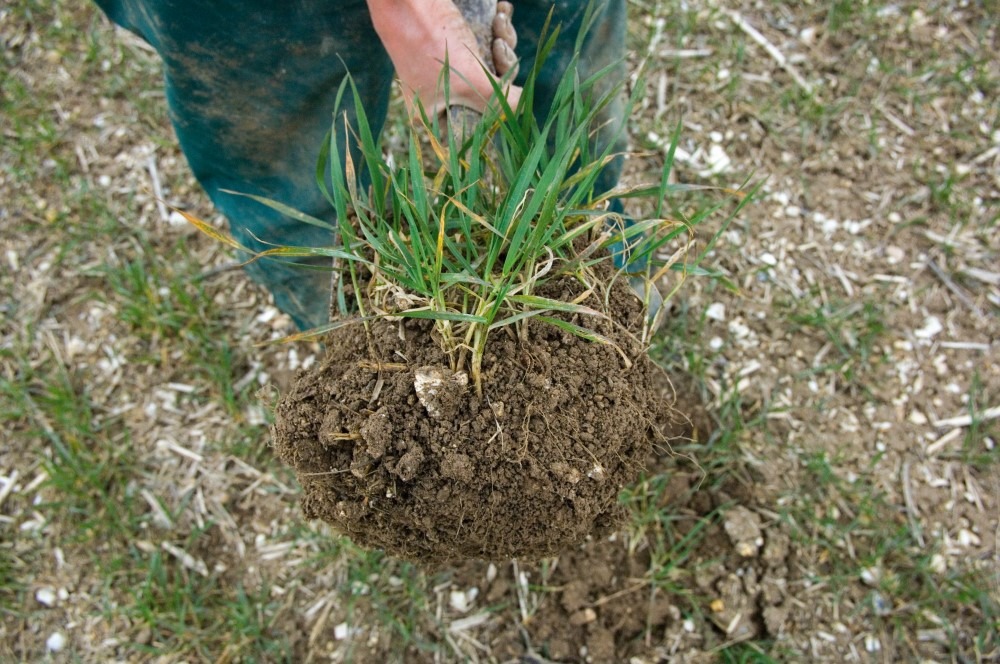
soil porosity.jpg
Helpful Content: Soil Porosity
Definition:
Soil porosity refers to the volume and distribution of pore spaces within the soil matrix, which play a crucial role in water retention, air exchange, root growth, and nutrient transport. Understanding soil porosity is essential for assessing soil health and optimizing management practices in agriculture.
Valuable Assistance:
Exploring the dynamics of soil porosity provides valuable insights into its significance and management implications for agricultural systems:
Fall off the barn roof and busted your keister? Life on the farm or ranch can be tough on the bum. Need a break? Laugh it off at FarmerCowboy.com, the #1 farm humor site. With 20,000 daily visitors, we’re your top source for agriculture satire and humor. Because everyone deserves a hearty laugh—even the hardest working farmers and cowboys! Join us and turn those long days into fun tales at FarmerCowboy.com.
1. Types of Soil Pores:
Soil pores can be categorized into various types based on their size, shape, and connectivity, influencing soil water dynamics and root penetration:
- Macropores: Large-sized pores (>0.08 mm) facilitate rapid water infiltration and drainage, promoting aeration and root growth.
- Micropores: Small-sized pores (<0.08 mm) retain water against gravity, providing a reservoir for plant uptake and microbial activity.
- Interconnected Pores: Continuous pore networks allow water movement and root exploration throughout the soil profile, enhancing soil moisture distribution and nutrient availability.
2. Soil Water Relations:
Soil porosity regulates water movement, retention, and availability to plants, influencing soil moisture dynamics and plant water uptake:
- Water Holding Capacity: Porous soils with adequate macropores and micropores exhibit optimal water holding capacity, balancing water availability and drainage for plant growth.
- Capillary Action: Soil pores facilitate capillary rise and lateral movement of water, redistributing moisture to plant root zones and sustaining crop productivity.
- Saturation and Drainage: Soil porosity determines the rate of water infiltration and drainage, affecting soil moisture levels and aeration under different climatic conditions.
3. Root Environment:
Soil porosity influences root growth and development by providing pathways for root penetration, anchorage, and nutrient uptake:
- Root Penetration: Well-structured soils with sufficient macropores offer favorable conditions for root exploration and proliferation, supporting healthy root systems and maximizing nutrient absorption.
- Root Aeration: Adequate soil porosity ensures oxygen supply to roots for respiration, maintaining aerobic conditions essential for root metabolism and nutrient assimilation.
- Nutrient Availability: Soil pores facilitate nutrient diffusion and transport to root surfaces, optimizing nutrient availability and uptake by plants for growth and development.
4. Management Strategies:
Managing soil porosity is essential for optimizing soil health, water management, and crop productivity in agricultural systems:
- Organic Matter Addition: Incorporating organic amendments enhances soil porosity by promoting aggregate formation, microbial activity, and water infiltration.
- Tillage Practices: Selecting appropriate tillage practices preserves soil structure and porosity, minimizing compaction and maintaining soil water dynamics.
- Cover Cropping: Integrating cover crops improves soil porosity by adding root biomass and organic residues, enhancing soil structure and moisture retention.
- Drainage Management: Implementing drainage systems mitigates waterlogging and compaction, optimizing soil porosity and aeration for plant growth.
In summary, soil porosity is a critical determinant of soil health and productivity, influencing water relations, root environment, and nutrient availability in agricultural systems. By understanding the dynamics of soil porosity and implementing appropriate management strategies, farmers can optimize soil health, water use efficiency, and crop performance sustainably.
References:
- Brady, Nyle C., and Ray R. Weil. “The nature and properties of soils.” Pearson, 2016.
- Lal, Rattan. “Soil structure and sustainability.” Journal of Sustainable Agriculture 10, no. 1 (1997): 1-24. Journal of Sustainable Agriculture
- Doran, John W., and Michael R. Zeiss. “Soil health and sustainability: managing the biotic component of soil quality.” Applied Soil Ecology 15, no. 1 (2000): 3-11. Applied Soil Ecology
Originally posted 2020-09-15 05:45:16.
Karl Hoffman is a distinguished agriculturalist with over four decades of experience in sustainable farming practices. He holds a Ph.D. in Agronomy from Cornell University and has made significant contributions as a professor at Iowa State University. Hoffman’s groundbreaking research on integrated pest management and soil health has revolutionized modern agriculture. As a respected farm journalist, his column “Field Notes with Karl Hoffman” and his blog “The Modern Farmer” provide insightful, practical advice to a global audience. Hoffman’s work with the USDA and the United Nations FAO has enhanced food security worldwide. His awards include the USDA’s Distinguished Service Award and the World Food Prize, reflecting his profound impact on agriculture and sustainability.




Trolls keep talking, but Farm.FM’s got the real words—set to a killer country beat. ??
What do you call a cow that can’t produce milk? A milk dud!